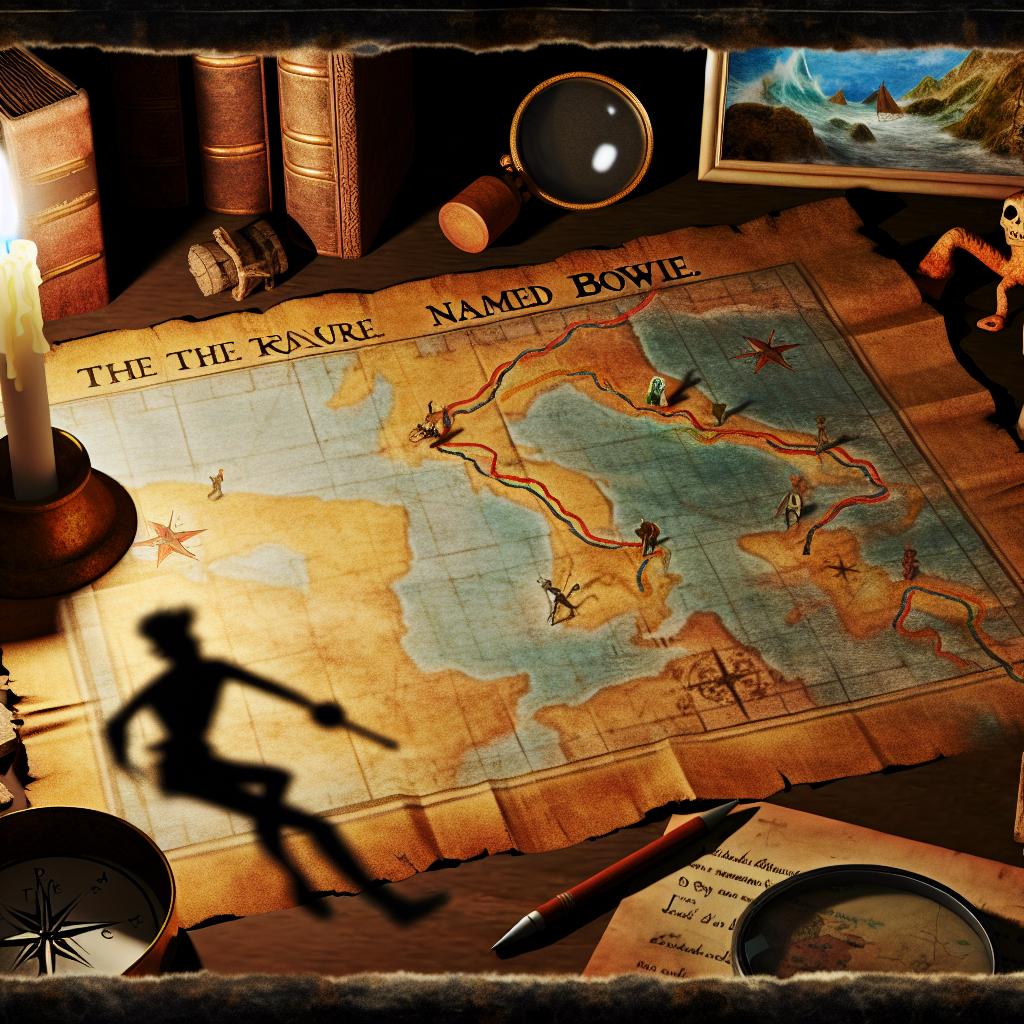The Origins of the Legend
The tale of the Lost Bowie Treasure is a captivating story that has intrigued history enthusiasts and treasure hunters alike. The legend traces back to the early 19th century, during a time when Jim Bowie, famous for his knife and exploits, was reportedly involved in secretive activities. This narrative suggests that before his death, Bowie amassed a significant fortune, often referred to as the “Bowie Treasure.” The exact details of how he acquired this wealth remain unclear, but various theories suggest it could include land deals, mining ventures, or spoils from various ventures during his adventurous life.
The legend has several variations, but at its core, it reflects the mystery surrounding the life and times of Jim Bowie. There are tales of gold, silver, and other valuable resources purportedly hidden away, with maps and clues left behind by Bowie himself or his close associates. The allure of discovering such a treasure has persisted for centuries, captivating not only treasure hunters but also historians who ponder on the life trajectories of adventurous figures of the early American frontier.
Historical Background
Jim Bowie was a pioneer, soldier, and adventurer known for his role in the Texas Revolution and the Battle of the Alamo, where he died in 1836. Over the years, he became a legendary figure in American history. His life was marked by daring exploits and associations with influential figures of his time, which adds layers to the treasure’s mystery.
The treasure allegedly linked to him is speculated to be hidden in the vast terrain of the southern United States, particularly in areas where Bowie was known to travel and conduct his businesses. The southern states, with their diverse landscapes ranging from dense forests to expansive plains, offer numerous potential hiding spots, making the search for the treasure both challenging and intriguing.
Bowie’s ventures in these regions were often characterized by rumors of hidden caches of wealth. Whether these rumors stemmed from actual events or were products of local folklore, the idea of Bowie having a secret fortune tucked away somewhere has endured. His involvement in various enterprises, from timber to land speculation, has fueled further conjecture about potential riches he might have accumulated over his lifetime.
Evidence of the Treasure
Concrete evidence of the Lost Bowie Treasure remains elusive. Historical documents, personal diaries, and letters from Bowie or his contemporaries do not provide any direct references to such a treasure. Yet, purported eyewitness accounts and oral stories passed through generations continue to fuel the mystery. Skeptics argue these accounts lack credibility as they often involve hearsay or provide scant details without verifiable sources.
The scarcity of reliable documentation presents a fascinating problem for historians and treasure seekers alike. Many accounts come from secondhand stories passed down within families or communities who had some connection to Bowie or his exploits. Anecdotal evidence, while colorful and engaging, lacks the substance required to definitively prove the treasure’s existence.
Nevertheless, these stories serve an important function: they keep the legend alive. In every hint, rumor, or clue, the mystery of Bowie’s treasure is perpetuated, weaving itself deeper into the fabric of American folklore.
Modern Searches
Despite the lack of hard evidence, adventurers and modern-day treasure hunters continue to seek the Lost Bowie Treasure. Many are inspired by the allure of history blended with the excitement of potential discovery. Utilizing advanced technology such as ground-penetrating radar and satellite imagery, some have embarked on expeditions in Texas and other areas rumored to be linked to Bowie’s activities.
Numerous search attempts have yielded interesting finds, like artifacts from the 19th century, but none conclusively linked to Bowie himself. These efforts highlight both the challenge and the appeal of treasure hunting. While many attempts are fruitless, the occasional discovery of historical artifacts ignites the hope that Bowie’s elusive treasure could be found.
Modern treasure-hunting endeavors are often well-documented, with searchers employing a mix of historical research and cutting-edge technology to comb through potential sites. From individual enthusiasts to organized expeditions, the search continues, reflecting the enduring allure of such legendary tales.
Conclusion
The Legend of the Lost Bowie Treasure continues to be a subject of fascination. While tangible proof remains unfound, the story persists in cultural consciousness, often inspiring literature, films, and explorations. For those interested in American history and folklore, the legend remains an enticing narrative, instigating ongoing research and exploration.
Its combination of adventure, history, and mystery ensures the tale remains relevant and captivating. For some, the pursuit of Bowie’s treasure represents more than just the search for wealth; it is a journey into the past, an opportunity to engage with American history in a dynamic and visceral way. The legend of Jim Bowie’s treasure, whether ultimately true or not, continues to captivate and inspire those daring enough to seek out what the frontier may still hide.
To learn more about Jim Bowie’s legacy, consider visiting historical archives or sites dedicated to the Texas Revolution and Alamo history for a comprehensive perspective. The story of the treasure is but one facet of Bowie’s complex and storied life, and exploring his legacy can provide deeper insights into the historical context that gave rise to such a fascinating legend. As long as people are drawn to stories of adventure and the unknown, the Lost Bowie Treasure will remain a tantalizing enigma, waiting to be unraveled.


